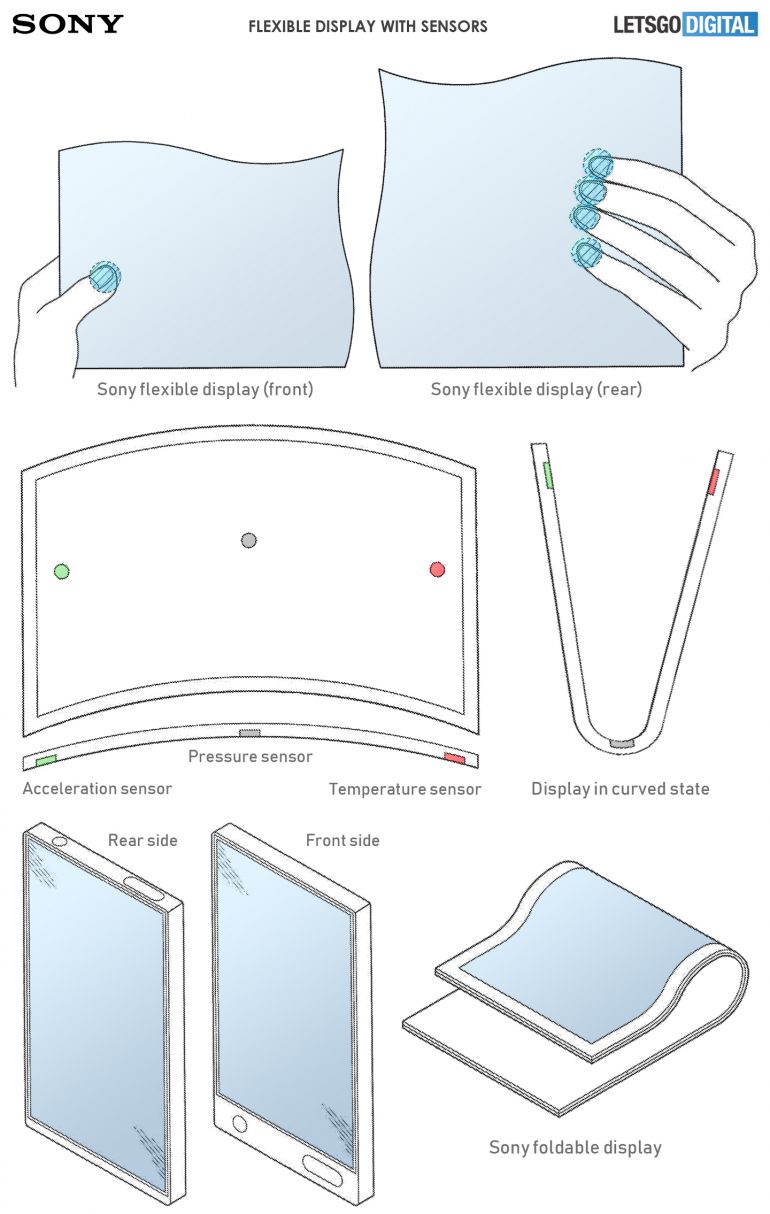Every player in the mobile business is toying with foldable designs. Some of them have already announced their first commercial products, but the foldable phones from Samsung and Huawei have yet to hit stores. Others have confirmed they’re working on foldable designs of their own, including Lenovo, Oppo, and Xiaomi.
And then some have been much more secretive about such plans, and I’m including Apple, Google, and Microsoft in that list. Sony might have just joined that latter group as well, as the company hasn’t announced any plans to manufacture foldable devices of its own, nor has it teased any concept products as other handset vendors have. But Sony is indeed studying foldable screen technologies, as recent discoveries have shown.
Dutch-language blog LetsGoDigital uncovered a Sony patent for flexible displays that contain at least three built-in sensors, including an accelerometer, pressure sensor, and temperature sensor.
These sensors are meant to interpret data from the user and understand how the person is holding the screen to adjust the UI experience automatically. The sensors could let the tablet know how much of the screen is visible to the user, and the phone would adapt the image automatically.

These sensors would also help guard the privacy of the user, by covering the unused portion of the screen with a screensaver or a solid color that would match the phone’s casing.
The feature could be useful for transparent foldable screens, something Sony is also exploring. The technology could be adapted for use on designs similar to the Huawei Mate X (top image), where the foldable screen is located on the outside of the handset. The sensors would only turn on the screen side facing the user, while obfuscating the rear display. It’s unclear what sensors are in play inside the Mate X, but when the phone is folded, only the screen side facing the user is active.
Sony’s patent also suggests that physical buttons could be mounted on the side of the phone, so that both the front and back of the handset could be turned into full displays. It’s unclear why we’d need such a feature in a phone. However, a double-sided transparent foldable screen might make it even easier to walk and use a phone at the same time.
This is just a patent, and there’s no telling when or if Sony plans to use this research to develop a commercial product. However, Sony is expected to launch an Xperia F foldable device at some point down the road.








